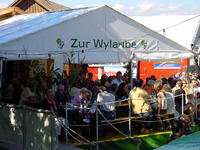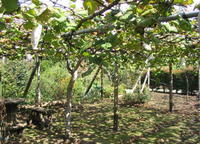:::::::::::::::::::::::::::::::::::::::::::::::::::::::::::::::::::::::::::::::::::::::::::::::::::::
Great Cold (daikan)
***** Location: Japan
***** Season: Late Winter, around January 20
***** Category: Heaven
*****************************
Explanation
Great Cold, daikan, taikan 大寒
"Coldest Day" kan no hi 寒の日
According to the Asian lunar calendar, the 20th day of the first lunar month is one of the coldest days.
Now re-located in January, but it should be February.
(The adaption of the Gregorian calendar had its problems for the haiku poets.)
January here stands for "the first lunar month".
.................................................................................

Photo by Gabi Greve
- Cold Winter Morning -
:::::::::::::::::::::::::::::::::::::::::::::::::::::::::::::::::::::::::::::::::::::::::::::::::::::
quote
January is also the extremely cold season in a year.
Shookan (less cold) fall on the 15th day after Touji (> winter solstice). It is on about January the 6th. Kan (cold season) continues from Shoukan to the day before of Risshun(the first day of spring).
So we refer to the period of these 30 days as Kan-no-uchi (midwinter)
from Kan-no-iri(beginning of midwinter) to
Kan-ake (the end of cold season).
Daikan(great cold) is on the 15th day, around January 20th after Shoukan. It is by far the coldest through the year.
It is wrong to refer to these 15 days between Shoukan and Daikan as Shoukan. Either Shoukan or Daikan shows only one day of the twenty four designated seasonal days, so now let's learn correctly how to use each word.
Inahata Teiko
http://www.kyoshi.or.jp/12month/12month-1.htm
:::::::::::::::::::::::::::::::::::::::::::::::::::::::::::::::::::::::::::::::::::::::::::::::::::::

Contribution of Larry Bole
"Taikan Misogi" 大寒禊
3 days around 20 January
Kasuga Jinja, Hofu, Yamaguchi Prefecture
Held on what is decreed to be the coldest day of the year.
Participants soak themselves in a bath of cold water before hot drinks and porridge. Said to ward off colds in the coming year.
http://www.japanvisitor.com/
There is something similar in England:
"January 13th: St Hilary's Day:
In 1205 there was a terrible frost across many of the English counties, and after that time St Hilary's Day became known as the coldest day of the year in popular lore."
http://www.gardenhistoryinfo.com/medieval/medtime02.html
and also:
"There is an old belief in Yorkshire that January 14, the feast of St Hilary, is the coldest day of the year.
Although there is little evidence to support this, January has produced some extremely cold weather over the centuries and it is widely believed that this regularly occurs about three weeks after the winter solstice.
Not only is St Hilary's Day supposed to be the coldest of the year, but January is also reckoned to be our coldest month. It has certainly included some spectacularly chilly events - until the middle of the 18th century, for example, it was common for the River Thames in London to be frozen over, sometimes with markets, fairs [known as 'Frost Fairs'] and skating taking place on the thick ice.
Similarly, rivers and ponds across England were also frozen, with the ice being strong enough to support skaters, and this sort of cold weather occurred in fairly recent times."
http://www.darlingtonandstocktontimes.co.uk/
Some "coldest day of the year" haiku I found:
coldest day of the year -
the moon lifts the tide
to overflowing
-Hoshika Katsumi, age 75, male
http://www.ecf.or.jp/shiki/2001/100haiku-e.html
coldest day of the year
the lone skater laps
his breath
-George Swede
http://www.terebess.hu/english/usa/swede.html
Compiled by Larry Bole
http://groups.yahoo.com/group/cherrypoetryclub/message/29943
:::::::::::::::::::::::::::::::::::::::::::::::::::::::::::::::::::::::::::::::::::::::::::::::::::::
The Asian Lunar Calendar.
Our Haiku Reference
kan no iri 寒の入 (かんのいり) "cold period begins"
kan no uchi 寒の内 (かんのうち)
"within the cold period"
kan doyoo 寒土用 (かんどよう) doyoo period of the cold
and a few more kigo :
. Cold in late winter .
*****************************
Worldwide use
*****************************
Things found on the way
The School of the Seasons, a treasure trove
http://www.schooloftheseasons.com/archives.html
Signs of the Season: Winter
January Calendar & Holidays
by Waverly Fitzgerald
*****************************
HAIKU
Daikan ya nagarete mune ni hibiku kyoku
Great Cold Day
music floats
through my mind
(Tr. Etsuko Yanagibori and Gabi Greve)
Hakyo Ishida
http://www.lib.ehime-u.ac.jp/KUHI/ENG/hakyoeng.html
xxxxxxxxxxxxxxxxxxxxxxxxxxxxx
kan no hi ni iku tabi kawaru umi no iro
Coldest Day !
changing all the time
the color of the sea
(Tr.Etsuko Yanagibori and Gabi Greve)
Heinosuke Gosho 五所平之助
http://www.bookrags.com/biography/heinosuke-gosho/
xxxxxxxxxxxxxxxxxxxxxxxxxxxxx
coldest day -
an eagle's head
above the mist
Cindy Zackowitz
Winter Haiku by Cindy
http://www.tempslibres.org/cindy/en/idxhiver.html
:::::::::::::::::::::::::::::::::::::::::::::::::::::::::::::::::::::::::::::::::::::::::::::::::::::
great cold day
even thoughts frozen
except for one
Great Cold Day
the face burned
by frosty wind
- Shared by Gennady Nov
Joys of Japan, March 2012
:::::::::::::::::::::::::::::::::::::::::::::::::::::::::::::::::::::::::::::::::::::::::::::::::::::
great cold day
forefeels the approach
of the sakura front
- Shared by Hideo Suzuki
Joys of Japan, March 2012
sakura front, sakura zensen 桜前線, the way how cherry blossoms start in Okinawa and work their way up north, until the front reaches Hokkaido. It takes about two months and is in the daily news.
*****************************
Related words
***** January
***** . Heaven in Winter ... SAIJIKI .
[ . BACK to DARUMA MUSEUM TOP . ]
[ . BACK to WORLDKIGO . TOP . ]
:::::::::::::::::::::::::::::::::::::::::::::::::::::::::::::::::::::::::::::::::::::::::::::::::::::

























